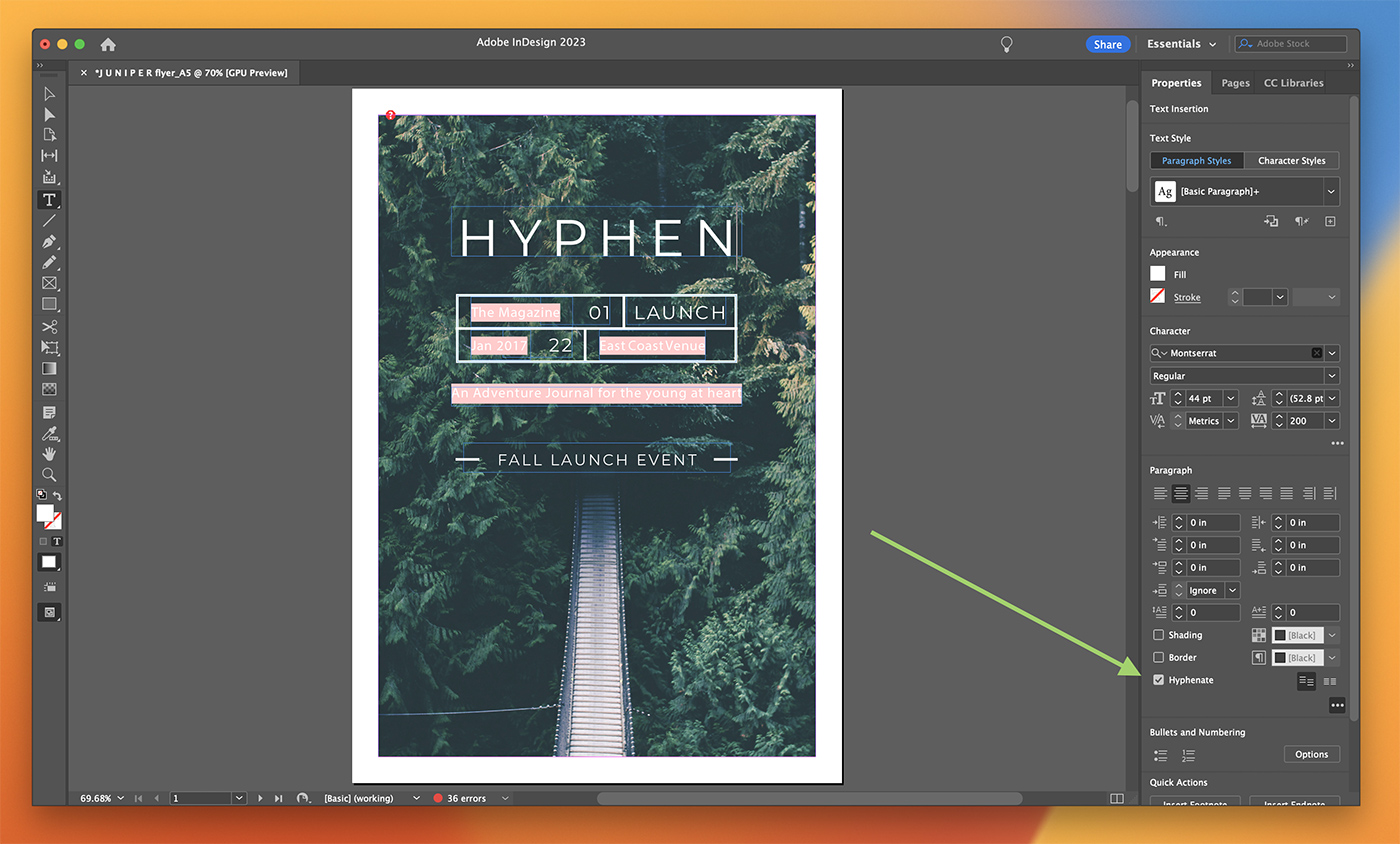How to Turn Off Hyphens in InDesign
Adobe InDesign is a powerful tool for creating professional publications and layouts. One of the features InDesign offers is automatic hyphenation, which helps to improve text flow and readability by breaking words at the end of lines.
However, there are instances where you might prefer not to use hyphens in your document. In this article, we will discuss how to turn off hyphens in InDesign, giving you full control over your text formatting.
With just a few clicks, you can disable hyphenation in InDesign for either one area, or the entire document.
20,000+ InDesign Templates & More With Unlimited Downloads
Discover thousands of Adobe InDesign templates for your next project with an Envato Elements membership. It starts at $16 per month, and gives you unlimited access to a growing library of over 2,000,000 graphic templates, design assets, themes, photos, and more.
Disabling Hyphens in InDesign
Turning Off Hyphenation for a Specific Text Frame or Paragraph
Follow these steps to disable hyphenation for a specific text frame or paragraph:
- Select the Text Tool (T) from the InDesign toolbar, or press the “T” key on your keyboard.
- Click within the text frame or paragraph where you want to disable hyphenation.
- If you want to disable hyphenation for an entire text frame, press “Ctrl + A” (Windows) or “Cmd + A” (Mac) to select all the text within the frame. If you only want to disable hyphenation for a specific paragraph, place the text cursor anywhere within the paragraph.
- Open the Paragraph panel by clicking “Window” > “Type & Tables” > “Paragraph” in the top menu bar.
- In the Paragraph panel, locate the “Hyphenate” checkbox at the bottom of the panel. Uncheck the box to disable hyphenation for the selected text frame or paragraph.

Turning Off Hyphenation for an Entire InDesign Document
To disable hyphenation for an entire InDesign document, follow these steps:
- Open the Paragraph Styles panel by clicking “Window” > “Styles” > “Paragraph Styles” in the top menu bar.
- In the Paragraph Styles panel, double-click the “[Basic Paragraph]” style to open the Paragraph Style Options dialog box. The “[Basic Paragraph]” style is the default style applied to all new text frames in your document.
- In the Paragraph Style Options dialog box, select “Hyphenation” from the list of categories on the left side of the dialog box.
- Uncheck the “Hyphenate” checkbox in the Hyphenation section.
- Click “OK” to apply the changes and close the Paragraph Style Options dialog box. This will disable hyphenation for all text frames in your document using the “[Basic Paragraph]” style.

Additional Hyphenation Options
In addition to turning off hyphens completely, InDesign also offers options to customize hyphenation settings. To access these settings, follow these steps:
- Select the text frame or paragraph for which you want to adjust hyphenation settings.
- Open the Paragraph panel by clicking “Window” > “Type & Tables” > “Paragraph” in the top menu bar.
- Click the “Hyphenation Settings” button (represented by three lines and a hyphen) located at the bottom-right corner of the Paragraph panel.
In the Hyphenation Settings dialog box, you can adjust various settings, such as:
- “Words with at least”: Set the minimum number of characters required in a word for hyphenation to occur.
- “After first” and “Before last”: Specify the minimum number of characters allowed before the first hyphen and after the last hyphen in a word.
- “Hyphenation zone”: Adjust the width of the hyphenation zone at the end of each line.
- “Hyphen limit”: Determine the maximum number of consecutive hyphenated lines allowed in a paragraph.
After making your desired adjustments to the hyphenation settings, click “OK” to apply the changes and close the Hyphenation Settings dialog box.
Conclusion
Disabling hyphens in InDesign gives you greater control over the appearance and readability of your text. By following the steps outlined in this article, you can easily turn off hyphenation for specific text frames, paragraphs, or an entire document.
Additionally, InDesign offers various customization options to fine-tune hyphenation settings according to your preferences, ensuring that your publications look polished and professional.
Understanding how to manage hyphenation in InDesign is a valuable skill that can improve the overall design and readability of your projects. Whether you’re working on a book, brochure, or digital publication, knowing how to turn off or adjust hyphenation settings empowers you to make informed decisions about your document’s layout and typography.





